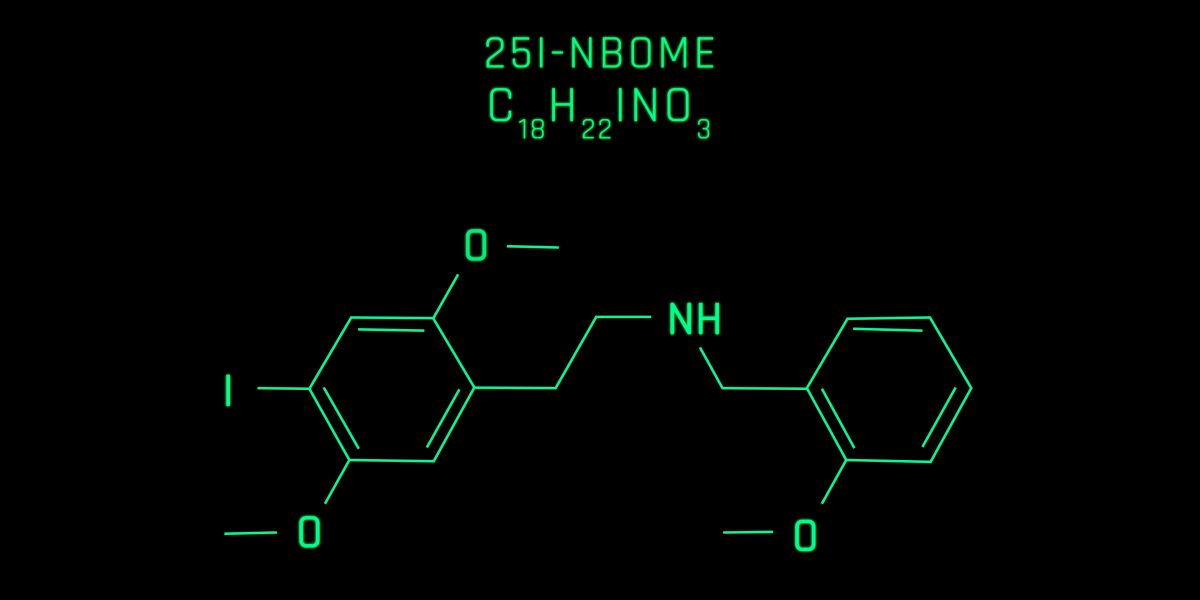
in this article
- Introduction
- What is 25I-NBOMe?
- 25I is Commonly Sold as LSD
- The Risks of 25I
- Harm Reduction Tips
Are you 18 or older?
Please confirm that your are 18 years of age or older.
You are not allowed to access the page.

Disclaimer: The views and opinions expressed in this article are those of the authors and do not necessarily reflect the official policy or position of Chemical Collective or any associated parties.
In the world of unregulated drugs, there is nothing to stop dealers from adulterating the drugs they sell or misselling them (giving you one thing, promising it’s something else). Most dishearteningly, the black market has encouraged dealers to adulterate drugs like heroin, cocaine, methamphetamine, and fraudulent prescription medications (opioids, sedatives, and stimulants) with the highly potent opioid fentanyl (the lethal dose of which is 2 mg).
Unfortunately, psychedelics are not immune to this problem. In the case of acid, when you buy the drug from a dealer, you may not be getting the real thing. What you may be getting instead is 25I-NBOMe, or another NBOMe compound, which does not have the reassuring safety profile of LSD. In fact, 25I can be dangerous – lethal, even – in standard, recreational doses.
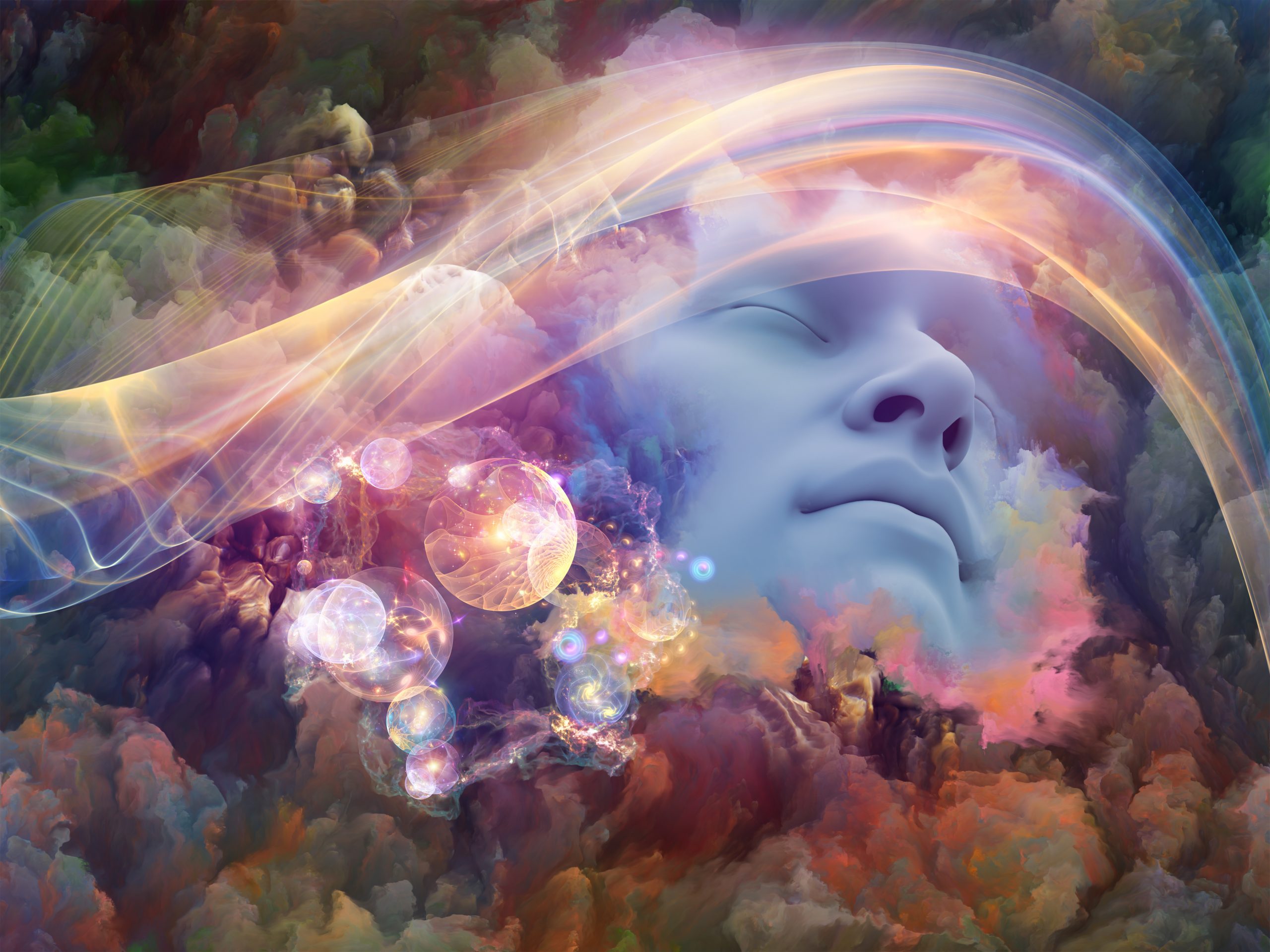
25I is an LSD-like novel psychedelic compound, first synthesised in 2003 by chemist Ralf Heim at the Free University of Berlin as part of his PhD research. However, it wasn’t until 2010 that the drug began to circulate widely in the underground drug market, first sold by vendors specialising in the supply of designer drugs. (While initially evading drug prohibition laws, countries eventually made 25I a controlled substance: it is a Schedule I drug in the US and a Class A drug in the UK, for example.)
25I is also often misrepresented as LSD, as reported by Europol.
It is easy to misrepresent it as LSD because it is also sold in blotter form, which is taken sublingually/buccally (on/under the tongue or in the mouth) and often features the same kind of blotter artwork associated with LSD. While many people know they’re getting 25I (if the dealer tells them, or the drug is advertised as such by a vendor on the dark web), others believe they’re buying and taking LSD. 25I differs from LSD, however, in terms of dosage, with the dosage range (from threshold to strong) of the hydrochloride salt being 50-1,500 μg (micrograms), according to Erowid, whereas the same dosage range for LSD is about a fifth of that (10-400 μg).
25I is a derivative of the phenethylamine psychedelic 2C-I, the latter of which the chemist Alexander Shulgin first synthesised in the 1970s and described in his book PiKHAL: A Chemical Love Story (1990). (Phenethylamines are a class of psychedelics to which mescaline belongs – this drug serving as the inspiration for his discovery of hundreds of novel phenethylamines.) 25I is the most well-known member of the 25-NB family. Like LSD and other classic psychedelics, it is an agonist for the 5-HT2A receptor, a type of serotonin receptor that mediates psychedelic effects.
The effects of 25I are very similar to those of LSD, although with a shorter duration (6-10 hours, instead of 8-12), and – as highlighted in one paper – users report more ‘negative effects while high’ and ‘risk of harm following use’ compared to classic psychedelics.
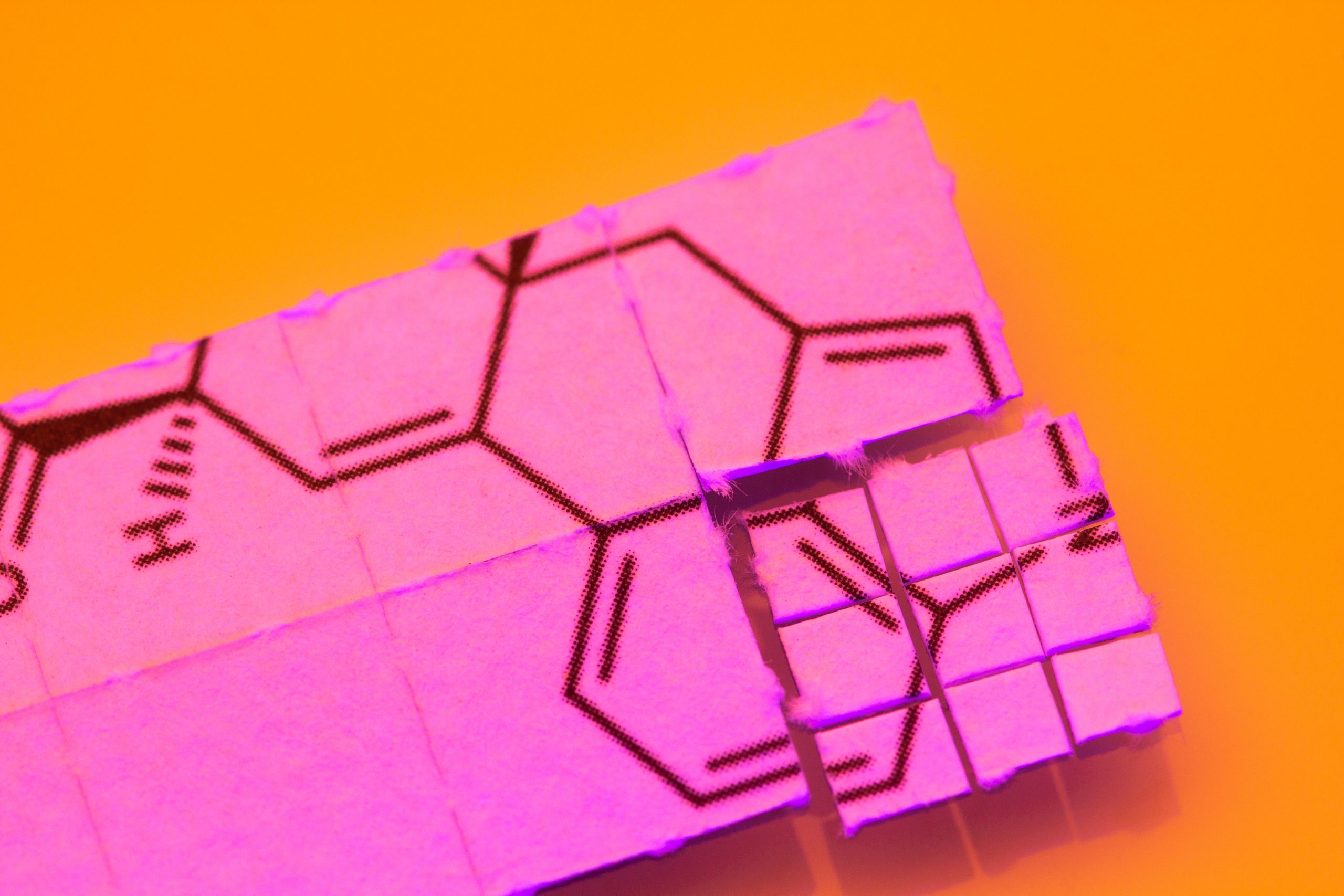
Many drug dealers either wittingly or unwittingly sell blotter containing 25I as LSD. How often that occurs, nonetheless, will vary from country to country (and if blotter tabs don’t contain 25I, they may still contain another – and potentially harmful – drug). For example, of more than 1 million tabs of ‘LSD’ seized by authorities in Brazil, only 18% in 2017 contained LSD, which was down from 100% in 2011. Up to 25 other substances were detected in blotters seized, including DOx, NBOMe, fentanyl, mescaline derivatives, cathinones, and synthetic cannabinoids, and sometimes more than one substance on the same blotter.
Similarly, research into blotters seized by authorities in two Colombian cities (Bogota and Baranquilla) in various places (airports, concerts, clubs, and parks) found that mixtures of new psychoactive substances (NPS) – including DOB, 25I, and 25I-NBOMe imine (an analogue of 25I) – were found within the blotters. And as the Europol research cited above shows, 25I is often missold as LSD throughout Europe, and the same occurs in other countries too.
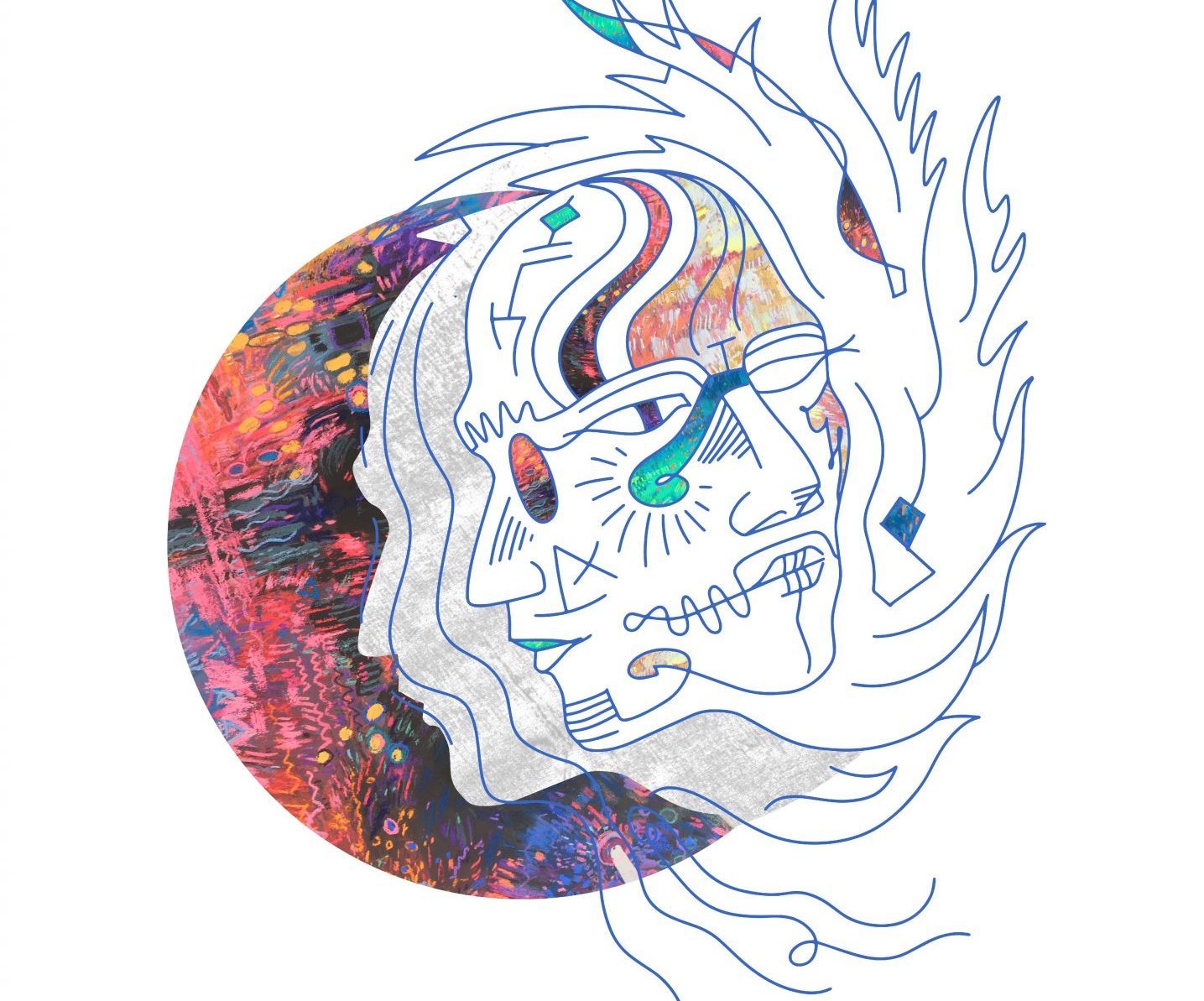
Many people enjoy the effects of 25I and don’t find it feels more negative – from a psychological or physical point of view – than LSD. In one Erowid trip report, someone even calls the drug the ‘perfect psychedelic’. However, no matter how many positive trip reports exist, which tell of little to no adverse effects, this doesn’t make 25I a safe compound. 25I, like other NBOMe compounds, is known to be toxic. It is both neurotoxic (it disrupts or kills neurons) and cardiotoxic (it causes heart dysfunction and damage).
Despite LSD also being highly potent, its use has only produced very low incidents of acute toxicity (yet crucially, as chemist David Nichols points out, in cases where LSD toxicity is reported, overdoses, circumstantial factors, or a drug like 25I being taken and not actual LSD, are to blame).
In recreational doses, LSD is known to be non-toxic, and people have taken accidental overdoses of the drug with no physical ill effects (although that is not to say such people have not been psychologically impacted by the experience).
Reports of autonomic dysfunction – when the autonomic nervous system (ANS), which regulates bodily functions, doesn’t work properly – are prevalent with the use of NBOMe compounds. This can manifest as hyperthermia, tachycardia, vasoconstriction, and hypertension. The likelihood of seizure is higher in NBOMes compared to other psychedelics.
Case reports of seven British males who presented to an emergency room after taking 25I suggest the following adverse effects can occur: tachycardia (n = 7), hypertension (4), agitation (6), aggression, visual and auditory hallucinations (6), seizures (3), hyperpyrexia (3), clonus (2), elevated white blood cell count (2), elevated creatine kinase (7), metabolic acidosis (3), and acute kidney injury (1).
25I can cause fatal reactions.
This can occur after taking only one or two tabs (so, one would assume, not a very high dose of the substance). Erowid has gathered some reports of 25I-implicated fatalities, which includes the story of a 17-year-old girl from Minnesota named Tara Fitzgerald, who in 2014 bought some tabs from a classmate called Brian and at them with her friend, believing they had bought LSD. A couple of hours after swallowing two tabs, Fitzgerald started moaning, apparently having muscle spasms. She would later die in hospital. The drug was determined to be 25I. There are other reports included of people taking what they thought was LSD – which was actually 25I – and suffering a fatal reaction. A significant number of such fatalities are due to this very mistake, but it can be easily avoided (as we’ll see in the next section).
While most fatalities are due to direct NBOMe toxicity, other cases ending in fatality have involved suicide and trauma after ‘excited delirium’.
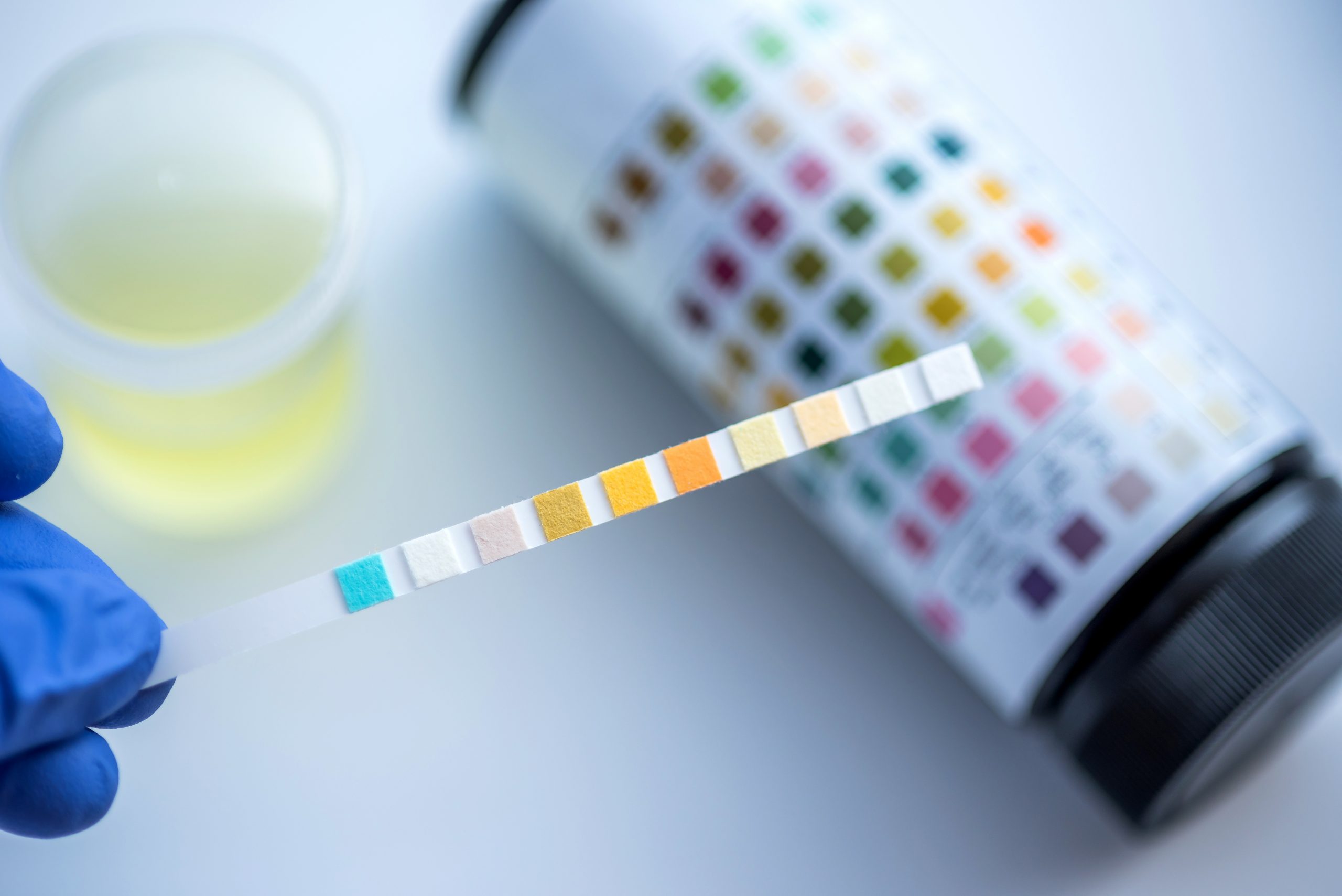
Based on the safety profile of 25I, it can seem like there is little benefit to trying the drug, just to see what the experience is like. If you’re looking for an LSD experience, it’s vital not to ingest any blotter you buy, based on the assumption that you’ll either get LSD or an LSD-like NBOMe compound, which will have similar effects anyway. This is unnecessarily risky.
While 25I is commonly sold as LSD by unscrupulous or careless dealers, real LSD of course is out there. And there are some ways you can know if you have either LSD or an NBOMe compound on your hands.
One technique is to place the blotter on your tongue. NBOMe compounds, after taken sublingually or buccally, are known to produce a metallic taste followed by numbness of the tongue and mouth. LSD might have a slight taste, owing to the ink on the paper, but it shouldn’t have a strong metallic or bitter taste. This is why you should follow the adage: “If it’s bitter, it’s a spitter.”
Erowid also recommends a technique of testing the light fluorescence of your tab under UV light.
Using a handheld UV lamp, LSD will glow brightly under long- and short-wave UB light, whereas 25I will not.
In addition, you can use drug resting reagent kits (how-to instructions here), the most essential being the Ehrlich reagent. This involves applying a drop of reagent to a tiny corner of your blotter paper, or a drop of suspected LSD liquid, on a plate. You should then note the colour change over the next few minutes. If the ‘LSD’ turns purple, then it’s the real thing. If it does not turn purple, this means no LSD is present. 25I, for example, does not react at all with Ehrlich reagent. This doesn’t guarantee that no 25I is present, however, as it is possible that the blotter may contain a mixture of it plus LSD (although it is more likely that only one or the other will be present). If your sample turns purple and the tab doesn’t have a strong, metallic bitter taste, then it is highly likely it is LSD. If you’re ever at a festival, be sure to check if drug testing is available on-site. The Loop, for example, uses infrared spectroscopy and reagent testing to carry out chemical analysis of drugs at festivals across the UK.
If you want to gain more reassurance that you have legitimate LSD, you can send a sample in for lab drug testing, using a service provided by DrugsData (formerly EcstasyData), created by Erowid, or a more country-specific service such as WEDINOS (UK-based) so you don’t have to send a sample abroad, which will be more expensive to do.
A cheap and easy-to-use reagent test or being aware of what tabs shouldn’t taste like could be all you need to avoid taking 25I.
These kinds of strategies can help you avoid the most serious kinds of harm. While LSD itself is very physiologically safe, the underground, unregulated drug market creates other dangers that you should be aware of. 25I has the potential to produce profound and positive trips, and you’ll be able to find fans of it, who claim they suffered no ill effects after taking it, but it really doesn’t seem worth the risk when much safer compounds (including LSD) exist.
Sam Woolfe | Community Blogger at Chemical Collective | www.samwoolfe.com
Sam is one of our community bloggers here at Chemical Collective. If you’re interested in joining our blogging team and getting paid to write about subjects you’re passionate about, please reach out to David via email at blog@chemical-collective.com

Welcome to Chemical Collective.
Create an account to earn 200 welcome points.
Already have an account? Sign in


Check out our Community Blog and get involved with the conversation. You will be awarded 50 x ChemCoins for each comment up to a limit of 250 total ChemCoins.


Have you purchased any of our products? Reviews and reports are so important to the community. Share your honest opinion, and we’ll reward you with 50 ChemCoins for each review!


Every time you complete an order with us, you’ll be awarded ChemCoins for each Euro spent.
Welcome to Chemical Collective.
Create an account to earn 200 welcome points.
Already have an account? Sign in

Earn commission every time someone makes a purchase through your link.
When you become an affiliate, you will be allocated a unique link to share with your friends, followers, subscribers, or Aunt Susan.
You can choose to payout the commission earned once per month, or save it up to receive on a rainy day! Commission earned is 5% of the total order value per referral.
Contact us to join the Chemical Collective family and become an affiliate.
share your toughts
Join the Conversation.
This is a result of making safer substances illegal
Never even knew about this… thank you so much 🙏
Thank you, it’s always important more people know about just how risky 25i-NBOMe has the potential to be, and how prevalent it is to be mislabled as LSD…
That’s a good tip. will be useful.